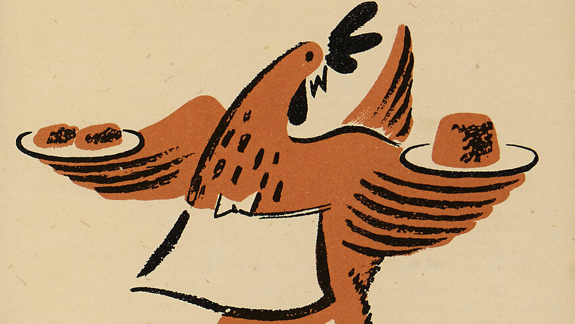From morse code to Shirley Temple: Unboxing hidden collections

Introduction
So, tell us a bit about these boxes you've been looking through. What are they?
Caleb
Well, you know how everyone has that drawer in their house? The one that's filled with all the things that don't have a home, but you know that you need to keep. It always ends up full of the most random items: rubber bands, old keys, takeaway menus, charging cables... These 'Series 7' boxes are a bit like that!
Sarah
That's a good description! Yes, for decades, whenever the Library received large-format items and we weren't sure where best to put them, we put them in a massive poster box at the 'Series 7' shelfmark. The Library's "shelfmarks" (the locations that our collections are shelved at) are a strange mix of names and sequences that are totally unique to the Library. The origins of the name 'Series 7' aren't fully clear, other than that it follows on from Series 6, which contains pamphlets, and it's followed by Series 8, which contains posters.
There are now over 200 of these boxes lining the shelves of our Causewayside building, and no-one is quite sure what's inside them.
Over the years, we've made several attempts to survey and catalogue this collection, but with an estimated 6,000+ items in the boxes, it's an unwieldy task! So, we've turned this into a student internship, and Grace, Lisa and Caleb have done a fantastic job discovering what's in some of the boxes.

6,000 items! Wow, how on earth did you decide where to start?
Sarah
I asked the students to just start with box number one and count how many items were in it. Then, they checked to see which items were listed on our catalogue (spoiler alert: over half of the items don't have online catalogue records); which ones needed repair work; and which ones might need moved to a new location.
Finally, they measured every item to make it easier to rehouse them in the future. It was time-consuming work, but very valuable for the Library! We've learned so much about the collection that we didn't know before. I thought these items were mostly going to be posters, but it turns out only 20% of what we found were. The rest was a little bit of everything!
Caleb
These boxes – although somewhat bland from the outside – are like little treasure troves waiting to be discovered!
Lisa
Exactly! When you pick up one of the boxes, you never know what to expect. Despite their size, some boxes are surprisingly light, while others can be almost impossible to carry.
Opening a box always brings a small moment of excitement along with the slightly musty odour all old things carry. Some boxes are completely stuffed. You must be cautious not to damage the items while taking everything apart. However, one thing remains constant: you always encounter an object that completely draws you in.
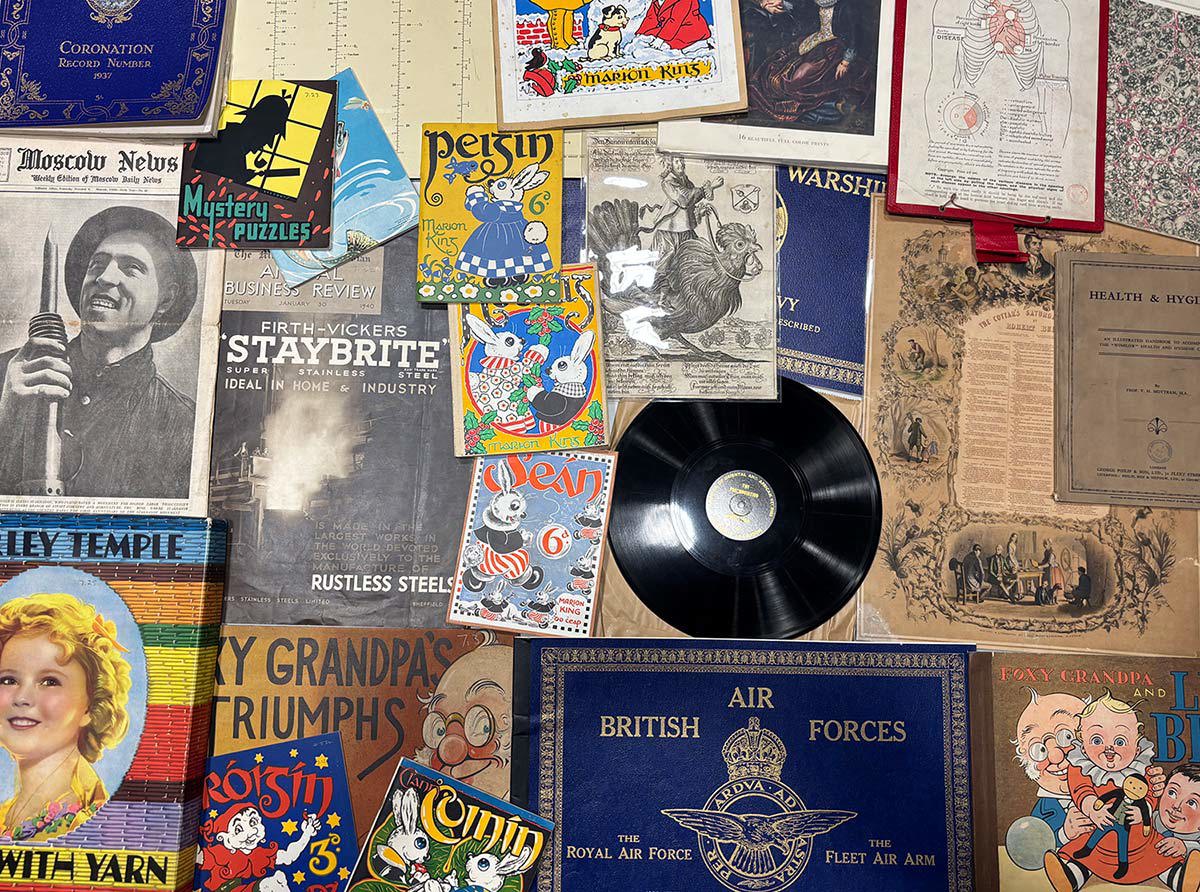
Interesting! What were some of your favourite discoveries?
Grace
You could never quite predict what you might find. One week you might discover a mysterious bag of sand! The next, you were unboxing a chart of morse code signals.
My greatest find, or perhaps most surprising, was an original Royal Proclamation from 1603, sitting in a box of 'Foxy Grandpa' comic strips! Having assumed this was a facsimile, I could not believe the item was, in fact, real!
This was immediately taken to the appropriate curators and Collections Care team. I am so honoured to have found this item as I feel as though I have directly contributed towards its preservation. Hopefully this will lead to exciting research in years to come!
Lisa
I had the same experience! I was working on a box that initially seemed quite unremarkable, containing a few old newspapers and magazines from the 1950s. However, among these more everyday objects, I discovered an assortment of very old-looking documents in a special folder.
It quickly became apparent that these were original proclamations issued under the joint monarchs William III and Mary II in around 1693. After a few colleagues reviewed them, these original sources were 'marked red' in our shared spreadsheet, and sent for urgent relocation.
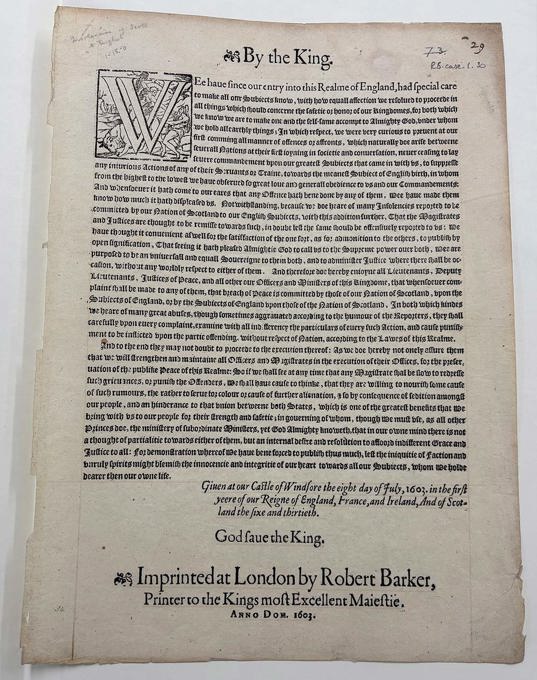
That's amazing! Why do you think something so rare ended up in this location?
Sarah
That's a great question. Our policy at the Library is usually to shelve things by size, to maximise our storage capacity. 'Foxy Grandpa' and Grace's Royal Proclamation are almost identical in dimensions, and both arrived at the Library at the same time.
Also, in the 1930s, the main National Library of Scotland building on George IV Bridge was still a long way from completion. So, I suspect it was a lack of space, and a lack of resources, that led to lots of these items being stored loosely by size.
Nowadays, we would remove anything especially old or fragile and store it with items of a similar age and value. It's been one of the most valuable things about this project, seeing these items find new homes and get some much-needed TLC!

You've mentioned comic books and royal proclamations. What other formats did you find in the boxes?
Caleb
Well, we found lots of things one would typically associate with a library such as books, posters and newspapers. But our project also revealed a broad collection of unusual items. Things like dioramas, model airplane kits, vintage calendars, sets of classroom flash cards, scrolls, shellac records, and sewing sets.
Most were from the early 20th century and carried with them a lasting reminder of the world a century ago. Lots of the items spoke of the increasing presence of modern technology in people's lives. Like charts of automobile parts, information about nuclear energy, posters of medical equipment, and information on air travel. Meanwhile, children's books and toys, including a Shirley Temple sewing kit alongside classroom material, gave an idea of the experience of adolescence a century ago.
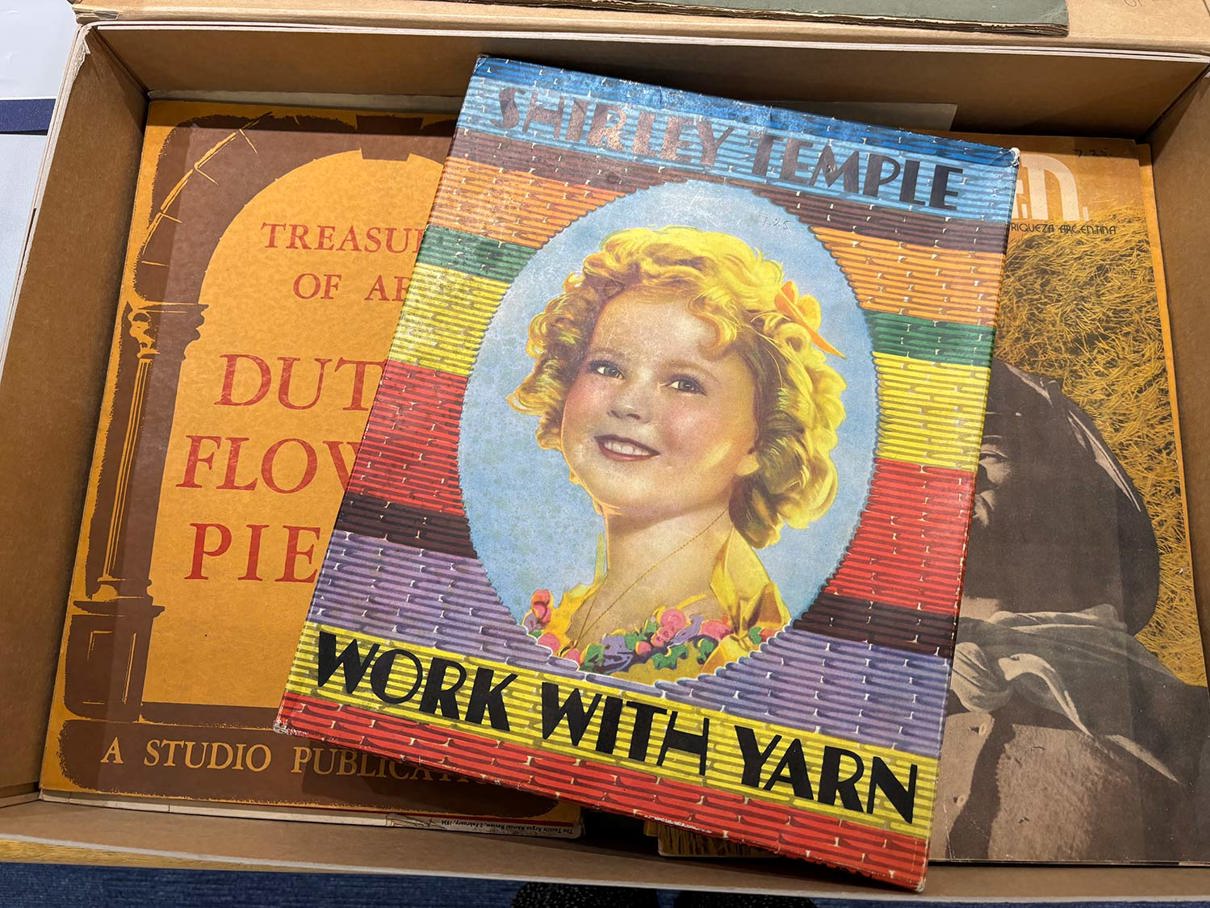
That sounds like fun! Did you find anything challenging or problematic in the boxes?
Caleb
It wasn't all sunshine and rainbows. Objects relating to the First World War were common. Such as books of illustrations of the RAF and the Royal Navy or sets of prints of Muirhead Bone's depictions of the war. Additionally, political posters presented ideas of colonial rule that today would be considered deeply problematic.
These objects each present an image of the past. In totality, they reveal a past worthy of remembrance and celebration, but also one that reveals important areas of societal growth and change.
This project increased visibility for these objects, many of which were in dire need of conservation and re-homing, and many had no catalogue entry. Surveying these boxes allowed for these items and the stories they carry to be made available and visible to the community.
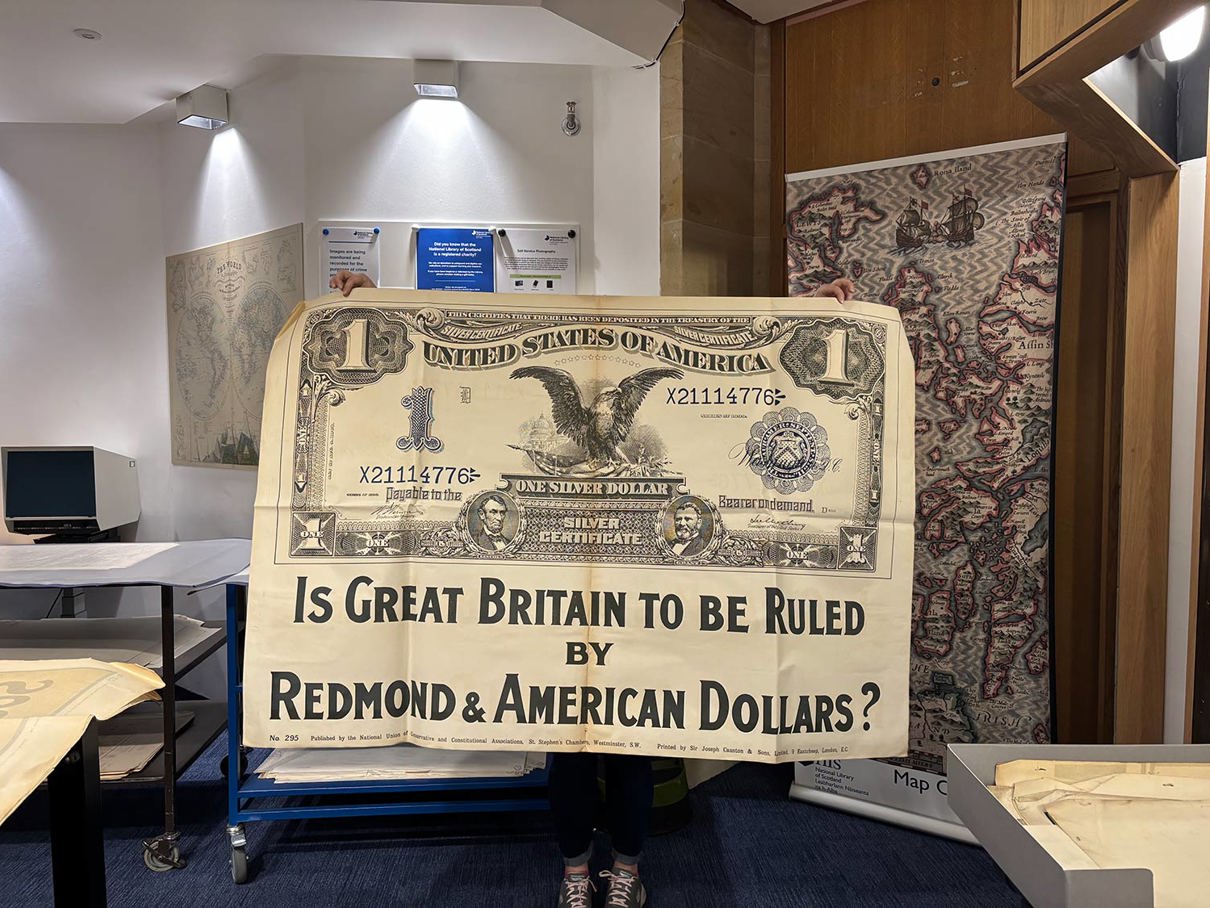
How about you, Lisa? Did you find anything surprising?
Lisa
I was fascinated by the 'Bibby's Quarterly' magazines and calendars. These were published by J. Bibby and Sons, a company that sold animal feed to British farmers. They also published calendars and magazines alongside their products.
The illustrations were painted by an artist named Gunning King (1859 to 1940), who transformed the rather mundane product into a world of charm and happiness. And how content King's cows looked!
It was easy to lose myself in these beautiful genre paintings where farmers and livestock couldn't appear more satisfied, thanks to 'BIBBY'. However, upon reaching the very last page, I found a table for calendar owners to enter the name of their cow and the date of slaughter. This put an end to my little excursion into the world of 1920s animal food advertisements.
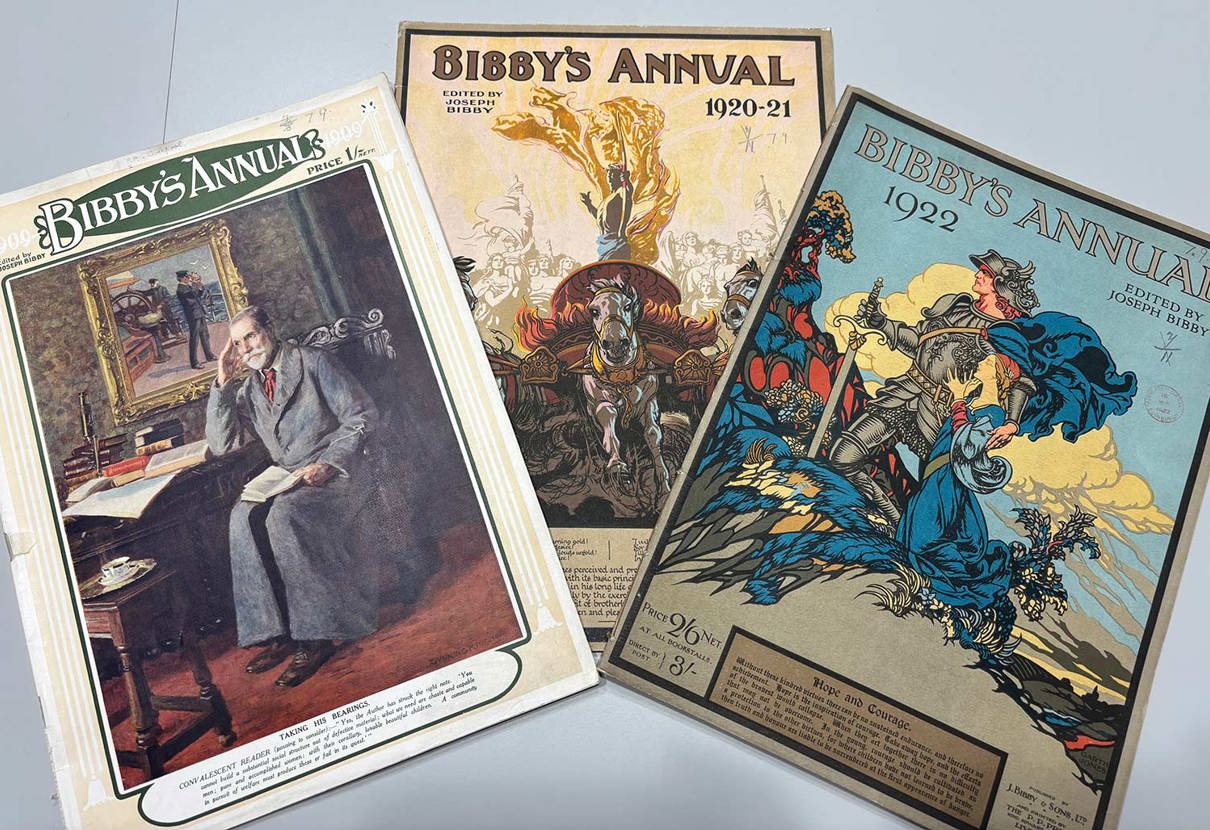
What relevance do you think these boxes have for a modern-day audience?
Sarah
I think some of the boxes are hugely relevant! We found multiple boxes of tariff reform posters from the Conservative and Unionist parties, making the cases for and against the protection of free trade. Over a century later, those arguments are now as timely as ever with everything going on in the United States over the last few months.
The collection is also hugely diverse. We've found items in French, German, Dutch, Arabic, Russian, Polish, Danish, Irish Gaelic, Hindi, Japanese and Afrikaans. Many of these were donated to the National Library of Scotland and happily accepted into our collections.

It sounds like there are lots of avenues for discovery in the 'Series 7' boxes. What's next?
Sarah
Grace, Caleb and Lisa have sorted through the first 50 of the 200 boxes (over 1,600 individual items), which is brilliant. They've flagged lots of items that need repaired or re-boxed, and also a good number that need catalogue records.
The relevant departments in the Library will now get to work, and hopefully by the end of the year the collection will be repaired and fully catalogued, ready for the public to enjoy.
Reboxing might take a little longer. The largest item they found was 3 metres by 2 metres, while the smallest was a wee A6 pamphlet. It will take some time to move everything into more appropriate storage locations.
Then, in January 2026, we're hoping to have another batch of interns arriving to help us work on the next 50 boxes. It's going to be an ongoing project, and I can't wait to see what next year's students discover!
Caleb
Now that individual objects are being repaired and some are even about to be digitised, these boxes are becoming more accessible for readers, which is exciting. We even got to see one object get repaired during the course of our placement.
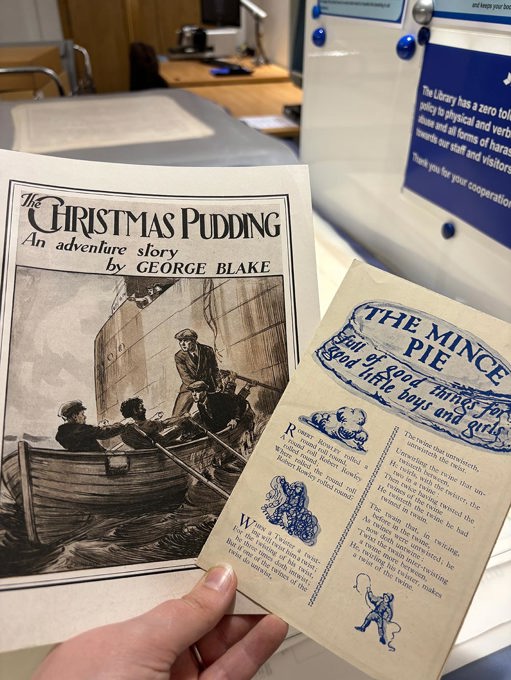
That's great! Do you have any final thoughts about this project?
Grace
It's been an incredible opportunity to unbox these historic treasures, but also to connect with Library staff. Hearing colleagues from various departments speak so passionately of their work was incredibly uplifting as a student preparing for graduate life.
Our regular engagement with staff created a warm and inviting environment. I immediately felt at home. As the institution hopes to assign new interns during 2026, all I can say is, "Enjoy!" You will discover items you never thought possible.
About the author
Sarah Thomson is Curator (Government and Civic Literacy) at the National Library of Scotland. Her favourite item from 'Series 7' is the 3D wooden farmyard diorama from 1900, which she took great delight in assembling. When she's not building model farmyards, she looks after the Library's political publications, including our extensive collection of Official Publications.
Acknowledgements
The Series 7 project has been made possible by student placements from the Edinburgh College of Art, as part of a long-standing internship programme between the two institutions.
Dive deeper
Soviet posters
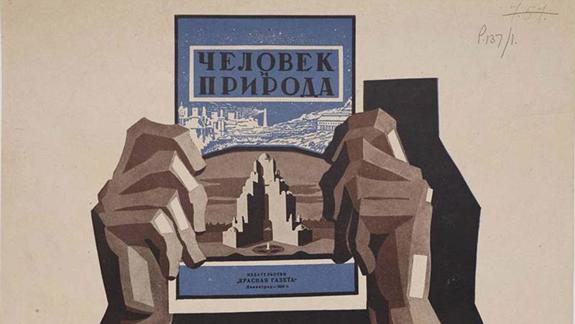
Theatre posters, 1870 to 1900
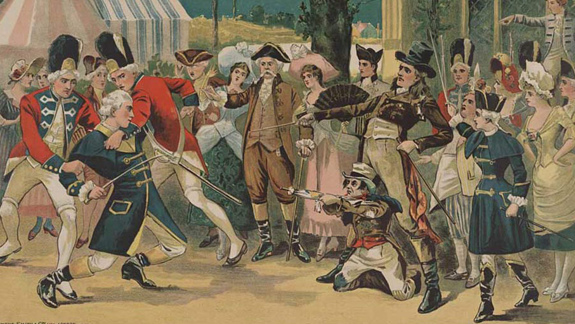
Ministry of food
